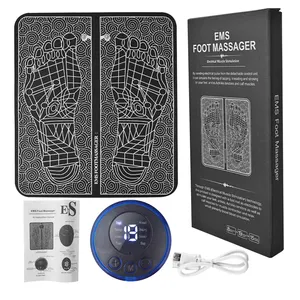Phổ biến trong ngành của bạn






ACE cầu thang kính cường lực lan can với bài baluster thép không gỉ Kính cầu thang lan can
48,00 US$ - 65,00 US$
Đơn hàng tối thiểu: 2 Mét







Nhà cung cấp tùy biến nóng người bán nội bộ biệt thự căn hộ lan can tay vịn lan can kính thép không gỉ
20,00 US$ - 26,00 US$
Đơn hàng tối thiểu: 2 Mét







Tùy Chỉnh Ngoài Trời Nội Thất Rõ Ràng Tempered Kính Nhiều Lớp Lan Can Lan Can Lan Can Lan Can Hàng Rào
5,50 US$ - 49,80 US$
Đơn hàng tối thiểu: 2 Mét







Thép không gỉ 304 ban công kính lan can nhà máy Outlet lan can cầu thang lan can kính phần cứng Tempered kính lan can
9,90 US$ - 15,50 US$
Đơn hàng tối thiểu: 10 Cái







Hiện đại ngoài trời kính lan can cầu thang lan can đứng cột lan can khung lan can lan can thép không gỉ ban công kính lan can
16,00 US$ - 23,00 US$
Đơn hàng tối thiểu: 5 Cái







Thiết Kế Mới Hiện Đại Cầu Thang Lan Can Ban Công 12 Mét Tempered Glass Cầu Thang Spigot Glass Lan Can Giá
24,76 US$ - 25,16 US$
Đơn hàng tối thiểu: 50 Cái






Spigot lan can hành lang Tempered Glass thiết kế hiện đại chủ cầu thang chủ Glass Mount bài lan can phù hợp Spigot lan can
25,00 US$ - 32,00 US$
Đơn hàng tối thiểu: 2 Mét






2024 sân thượng lan can thiết kế hiện đại nhôm U kênh cho ban công kính lan can
22,00 US$ - 34,00 US$
Đơn hàng tối thiểu: 2 Mét






Lan Can Ban Công Hành Lang Nhôm Thiết Kế Cầu Thang Trong Nhà Cho Biệt Thự Sân Thượng Lan Can Cầu Thang Bằng Thép Không Gỉ
56,00 US$ - 85,00 US$
Đơn hàng tối thiểu: 2 Mét





Thép không gỉ hành lang tangga lan can thiết kế cho sắt xi măng ban công lan can kính lan can chủ cho bên ngoài
24,99 US$ - 26,99 US$
Đơn hàng tối thiểu: 10 Cái




Lan Can Ban Công Lưới Tản Nhiệt Nhôm Tùy Chỉnh Lan Can Bằng Kính Thép Không Gỉ Lan Can Kính Lan Can Ban Công
60,00 US$ - 80,00 US$
Đơn hàng tối thiểu: 10 Mét vuông






Hệ Thống Lan Can Bằng Thép Không Gỉ Cho Ban Công Thiết Kế Mới Của PEMCO Lan Can Kính Cường Lực
21,00 US$ - 23,00 US$
Đơn hàng tối thiểu: 10 Cái
Các tìm kiếm liên quan:
lan can kính hành langlan can kính vô hìnhlan can kính ban công hiện đạilan can kính conglan can kính không khung hiện đạilan can kính hiện đạithiết kế lan can kính hiện đạigiá lan can kínhnhà cung cấp lan can kính cường lựclan can kính không khungthiết kế lan can kính hình ảnhlan can kính cường lựclan can kính màugiá kính lan can thiết kếlan can kính cường lực trong nhà






Sang trọng trong nhà cầu thang phòng ngủ hành lang chiếu sáng Glass cầu thang thép lan can
49,00 US$ - 99,00 US$
Đơn hàng tối thiểu: 2 Mét vuông






Hành lang kính lan can thiết kế hiện đại clip cho Glass kẹp cái vòi nước
6,60 US$ - 16,43 US$
Đơn hàng tối thiểu: 300 Cái






Hdsafe dự án trường hợp kính lan can cong ngoài trời nhôm baluster lan can cầu thang hàng rào lan can ban công kính lan can
42,00 US$ - 45,00 US$
Đơn hàng tối thiểu: 2 Mét






Lan Can Kênh Chữ U Cao Cấp Không Khung Sử Dụng Ban Công Cho Nhà Biệt Thự Lan Can Kính Nhìn Không Chặn
35,00 US$ - 45,00 US$
Đơn hàng tối thiểu: 10 Mét






Prima bệnh viện PVC chống va chạm tay vịn cầu thang rào cản miễn phí hành lang tay vịn cho người già nhà dưỡng lão kênh lan can
550,00 US$ - 855,00 US$
Đơn hàng tối thiểu: 10 Mét






Cầu thang lan can phù hợp nhôm U kênh kính không khung thép không gỉ lan can nhôm lan can cho ban công trong nhà
Sẵn sàng vận chuyển
75,00 US$ - 98,00 US$
Đơn hàng tối thiểu: 2 Mét
Vận chuyển mỗi chiếc: 204,85 US$






Lan Can Phương Đông Giá Đỡ Rẻ Nhất Màu Đen Gấp Bằng Gỗ Cầu Thang Bên Trong Hành Lang Trong Nhà Và Lan Can Hành Lang Lan Can Lan Can
30,00 US$ - 80,00 US$
Đơn hàng tối thiểu: 1 Mét vuông






Rg90 tiếp xúc với khung lan can chất lượng hàng đầu hợp kim nhôm lan can cầu thang kính lan can tùy chỉnh thiết kế kính lan can
45,00 US$ - 70,00 US$
Đơn hàng tối thiểu: 2 Mét vuông






Bns bên ngoài hành lang lan can & tay vịn bước cầu thang thép không gỉ ban công lan can lan can cho kính không khung
17,00 US$
Đơn hàng tối thiểu: 2 Cái






Nhà Máy Giá lan can đầy đủ Spigot kính cường lực lan can cho lối đi hành lang sân thượng
49,00 US$ - 72,00 US$
Đơn hàng tối thiểu: 2 Mét






Cầu thang lan can ngoài trời ban công kính kẹp lớn "D" loại lan can ban công lan can cho thép không gỉ zamak Kính CL
3,98 US$ - 4,77 US$
Đơn hàng tối thiểu: 500 Cái






DS Lan Can Kính Chữ U Không Khung Cho Cầu Thang Và Ban Công
69,00 US$ - 89,00 US$
Đơn hàng tối thiểu: 1 Mét






Sang trọng đôi trong nhà ánh sáng nhà cầu thang phòng ngủ hành lang chiếu sáng kính cầu thang lan can cầu thang
168,00 US$ - 204,00 US$
Đơn hàng tối thiểu: 2 Mét






Hoyip Luxury 80MM Treo Kính Nhựa Acrylic Lan Can Lan Can Hiên Cho Hành Lang Sàn Nhà Biệt Thự
16,50 US$ - 35,00 US$
Đơn hàng tối thiểu: 100 Cái






Châu Âu Hiện Đại Sáng Tạo Cầu Thang Lan Can Duplex Sang Trọng Hộ Lan Tôn Sóng Bắc Âu Biệt Thự Hàng Rào Hành Lang Lan Can
45,50 US$ - 85,50 US$
Đơn hàng tối thiểu: 50 Mét vuông






Tùy chỉnh thông số kỹ thuật ban công hành lang cột ổn định cầu thang lan can lục bình bài viết ban công tay vịn thép không gỉ bài
6,90 US$ - 49,90 US$
Đơn hàng tối thiểu: 50 Mét vuông






Nhôm khung hành lang bảo vệ lan can quảng cáo tùy chỉnh chịu mài mòn PVC vật liệu nhựa Nickel thép không gỉ hiện đại
4,80 US$ - 7,80 US$
Đơn hàng tối thiểu: 300 Mét





Phong cách nhôm không gỉ cầu thang lan can Thiết kế nhôm Trung Quốc hiện đại sàn nhà nhỏ ZR nhỏ Kim loại cocktail dĩa
2,50 US$
Đơn hàng tối thiểu: 1000 Cái






Veranda Lan Can Bằng Nhôm Lan Can Kính Cho Hàng Rào Lan Can Kênh Chữ U Kính 12-20Mm Rào Chắn Hành Lang Cầu Thang Lan Can Bằng Kính
39,00 US$ - 53,00 US$
Đơn hàng tối thiểu: 2 Mét vuông






Df khách sạn hiện đại lan can hành lang thép không gỉ kim loại boong Cáp lan can Wire Rope hardrail lan can ốc vít bài
15,50 US$ - 24,50 US$
Đơn hàng tối thiểu: 10 Cái






Tường gắn cho kéo dài ống kính lan can ống gắn ban công hành lang cột ổn định
0,27 US$ - 0,60 US$
Đơn hàng tối thiểu: 2 Cái






Chất lượng cao tùy chỉnh thép không gỉ cầu thang lan can Phụ kiện cho hành lang
19,20 US$ - 24,30 US$
Đơn hàng tối thiểu: 10 Cái






TAKA Giá Thấp Thiết Kế Sang Trọng Ban Công Acrylic Rod Trụ Cột Lan Can Thiết Kế Pha Lê Lan Can Bài
3,00 US$ - 20,00 US$
Đơn hàng tối thiểu: 1 Cái






Chất Lượng Cao Tùy Chỉnh Ban Công Cầu Thang An Toàn Nhôm Lan Can Decking Hành Lang Lục Bình Nhôm Lan Can
29,00 US$ - 89,00 US$
Đơn hàng tối thiểu: 50 Bộ






Lan Can Cổng Chữ U Ngoài Trời Thiết Kế Hiện Đại Lan Can Hàng Rào Nhôm Ngoài Trời Lan Can Kính Không Khung Trong Nhà
40,00 US$ - 64,00 US$
Đơn hàng tối thiểu: 2 Mét






Ban Công Thép Không Gỉ Kính Lan Can Thiết Kế Giá Mỗi Mét Hình Ảnh Có Thể Tháo Rời Sàn Lan Can Trong Pakistan
88,00 US$ - 95,00 US$
Đơn hàng tối thiểu: 10 Mét vuông






Lan can thép không gỉ lan can kính lan can hàng rào handrailing Kính Spigot
10,85 US$ - 11,43 US$
Đơn hàng tối thiểu: 300 Cái
Các danh mục hàng đầu
Giới thiệu về lan can kính hành lang thiết kế hiện đại
Ngày nay, lan can kính hành lang thiết kế hiện đại không còn là điều mới mẻ đối với những người bình thường và không còn bị coi là điều cấm kỵ khi sử dụng. Nếu bạn đang tìm kiếm niềm vui áp chót đó, bạn phải kiểm tra sự bao la. Bộ sưu tập lan can kính hành lang thiết kế hiện đại tại Alibaba.com. Những gợi cảm và cong. lan can kính hành lang thiết kế hiện đại đáng giá từng xu và chắc chắn làm cho đêm đó trở nên đặc biệt đối với bạn. Những con búp bê này có ngoại hình giống như thật, bắt đầu từ tóc đến ngón chân theo mọi nghĩa.
Cho dù bạn là một người cô đơn đang tìm kiếm một người bạn đời như cuộc sống hay một cặp vợ chồng muốn thêm gia vị cho cuộc sống của họ, bạn đều có thể sử dụng chúng . lan can kính hành lang thiết kế hiện đại để đốt cháy ngọn lửa đó. Những ngoạn mục. lan can kính hành lang thiết kế hiện đại có thể tùy chỉnh theo mong đợi của bạn. Những điều tuyệt vời. lan can kính hành lang thiết kế hiện đại có sẵn ở cả phiên bản dành cho nam và nữ và được làm từ silicone cấp y tế để sử dụng an toàn. Hãy sở hữu ngay bây giờ và tận hưởng một đêm đam mê và cháy bỏng.
Alibaba.com cung cấp những điều tuyệt vời này. lan can kính hành lang thiết kế hiện đại ở mọi hình dạng cơ thể, kích thước và sắc tộc. Dù yêu cầu của bạn đối với. lan can kính hành lang thiết kế hiện đại, bạn có thể tải tất cả chúng trên trang web. Những cái này. lan can kính hành lang thiết kế hiện đại được tạo hình bởi những người thợ thủ công giỏi nhất và mọi chi tiết phức tạp đều được kiểm tra kỹ lưỡng. Những con búp bê này có mắt, tóc, móng tay và tất cả các bộ phận cơ thể khác tương tự như người thật.
Alibaba.com cung cấp nhiều loại. lan can kính hành lang thiết kế hiện đại có thể giúp bạn mua các sản phẩm phù hợp với ngân sách và các yêu cầu khác của bạn. Các sản phẩm này an toàn để sử dụng, được chứng nhận và thân thiện với môi trường trong tự nhiên. Đơn đặt hàng OEM có sẵn trên các sản phẩm này.
Cho dù bạn là một người cô đơn đang tìm kiếm một người bạn đời như cuộc sống hay một cặp vợ chồng muốn thêm gia vị cho cuộc sống của họ, bạn đều có thể sử dụng chúng . lan can kính hành lang thiết kế hiện đại để đốt cháy ngọn lửa đó. Những ngoạn mục. lan can kính hành lang thiết kế hiện đại có thể tùy chỉnh theo mong đợi của bạn. Những điều tuyệt vời. lan can kính hành lang thiết kế hiện đại có sẵn ở cả phiên bản dành cho nam và nữ và được làm từ silicone cấp y tế để sử dụng an toàn. Hãy sở hữu ngay bây giờ và tận hưởng một đêm đam mê và cháy bỏng.
Alibaba.com cung cấp những điều tuyệt vời này. lan can kính hành lang thiết kế hiện đại ở mọi hình dạng cơ thể, kích thước và sắc tộc. Dù yêu cầu của bạn đối với. lan can kính hành lang thiết kế hiện đại, bạn có thể tải tất cả chúng trên trang web. Những cái này. lan can kính hành lang thiết kế hiện đại được tạo hình bởi những người thợ thủ công giỏi nhất và mọi chi tiết phức tạp đều được kiểm tra kỹ lưỡng. Những con búp bê này có mắt, tóc, móng tay và tất cả các bộ phận cơ thể khác tương tự như người thật.
Alibaba.com cung cấp nhiều loại. lan can kính hành lang thiết kế hiện đại có thể giúp bạn mua các sản phẩm phù hợp với ngân sách và các yêu cầu khác của bạn. Các sản phẩm này an toàn để sử dụng, được chứng nhận và thân thiện với môi trường trong tự nhiên. Đơn đặt hàng OEM có sẵn trên các sản phẩm này.












